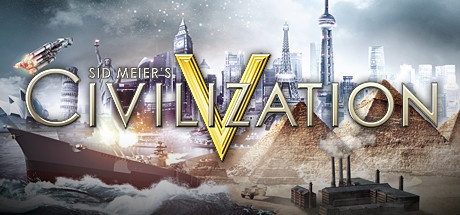Sid Meier’s Civilization V remains on top

March 7, 2018
Despite being published over seven years ago, “Sid Meier’s Civilization V” and its multitude of DLC (downloadable content) packs are refreshing in almost every aspect. Fantastic versatility and variety are displayed in the complex systems for resources, diplomacy and production, in which the computer game is sure to please those bent on strategy and intense decision-making.
For simplicity’s sake, a brief description of the game is that a player is to control an expandable civilization on a chosen landmass. The game is also based on turns, in which each completed turn leads the player one step closer to the buildings produced in their cities. Ultimately, the goal is to survive and thrive against city-states and civilizations. While a player can ally these other regions, one can also grow through warfare and annexation.
At the start, throwing oneself straight at the game may lead to instantaneous confusion. There’s multiple aspects to keep track of for success, including: happiness, culture, production, science, food, gold, faith and later: tourism. Even so, much of the amounts are self-explanatory in their uses once a player becomes accustomed to them. Thankfully, the game has these well-organized in a bar, with symbols to easily recognize their status. Notably, the happiness symbol turns to red and a frown when the happiness value is below zero.
Each number holds impactful influence onto the end result of a civilization. Food increases civilization size, science leads into technologies, faith strengthens religion and so on. In turn, this requires intense evaluation of the resources the player has at hand and how to manage them as well. Even better, the game has built-in citizen management for the tiles, allowing the player to customize each city based on what they strive to improve or earn.
Maps are quite diverse in generation, with a vast number of biomes to build upon, adding reason to replay the game many times over. There are elevation differences as well, in which hills decrease player movement, meanwhile mountains cannot be crossed at all by on-land troops. These provide strategic, defensive benefits to those that settle near the formations, as there are less tiles from which the player can be attacked from, meanwhile less to defend, as well.
Additionally, when the player creates a map and begins, a ‘fog of war’ limits the visibility of the player by providing an opaque grey blanket across the map. As an intriguing manner of forcing player exploration, there is value in entering the fog, especially in how a player can receive a fair amount of gold coins at the first time they meet another city-state.
Perhaps unfortunately, the player’s growth can then be partially decided based on where their ‘Settlers’ spawn at. Waiting to found a city — more or less the starting point of a civilization — will set the player behind other characters. Beginning near a bare tundra or desert yields limited quantities of food and production, unless the player is lucky enough to have luxury or strategic resources available. While this may increase the challenge of using what is available, it can be a great hindrance against other powerful civilizations.
In order to defend one’s civilization, there is an advanced and varied combat system in place. With skills such as visibility, movement and combat range, each troop is diverse in its creation, acting in certain roles which the player can use to cater to his or her aspirations. Their capabilities also progress as technology increases, as the player can upgrade their troops to a more modern version, away from bows and arrows or spears. At times, battle animations can be long winded, but thankfully, time can be saved by turning them off under the quick combat setting.
Retaining its ability to stay fresh over time, “Sid Meier’s Civilization V” and its DLC collect to form a top-tier strategy game, highlighting a broadened progress of societies and portraying the obstacles they may encounter.











